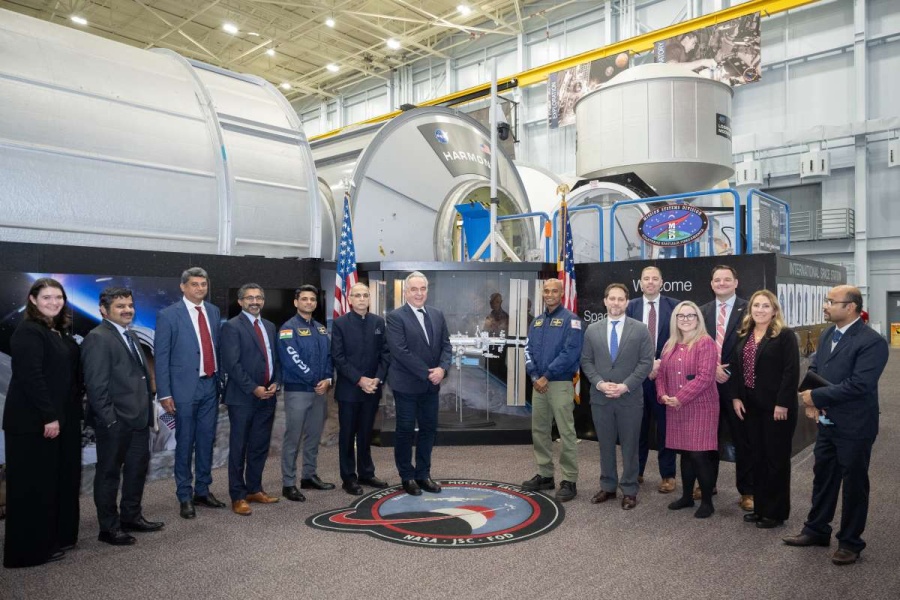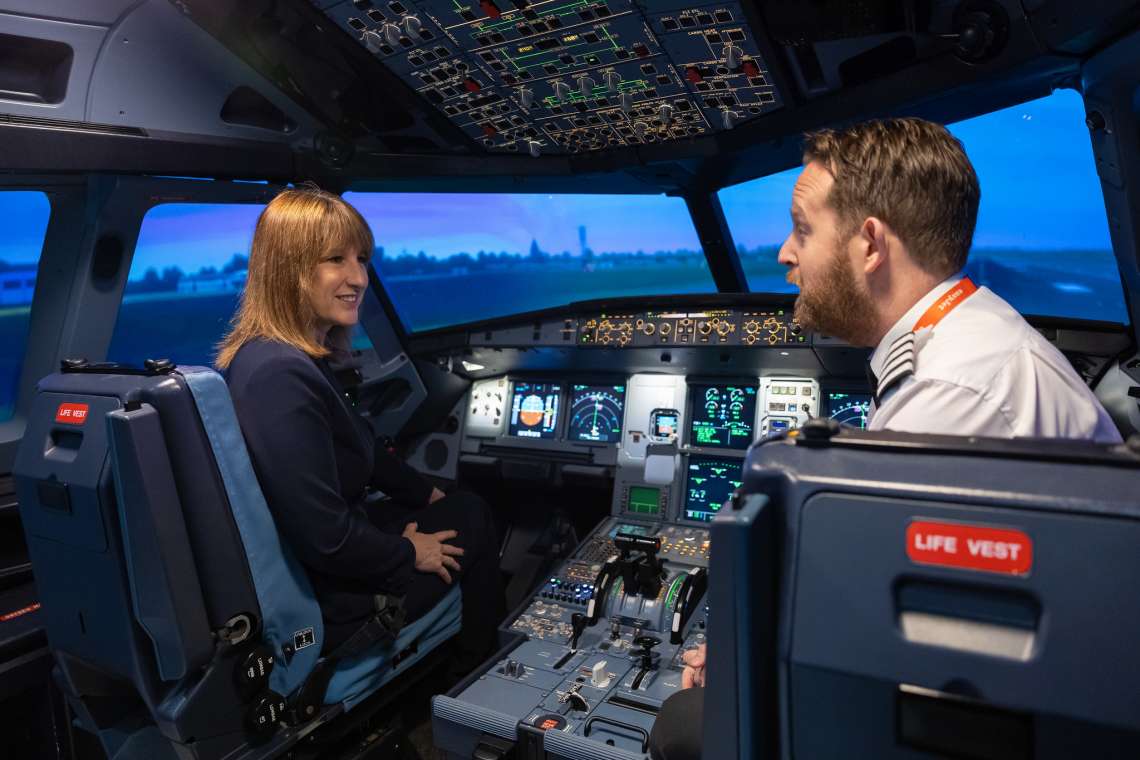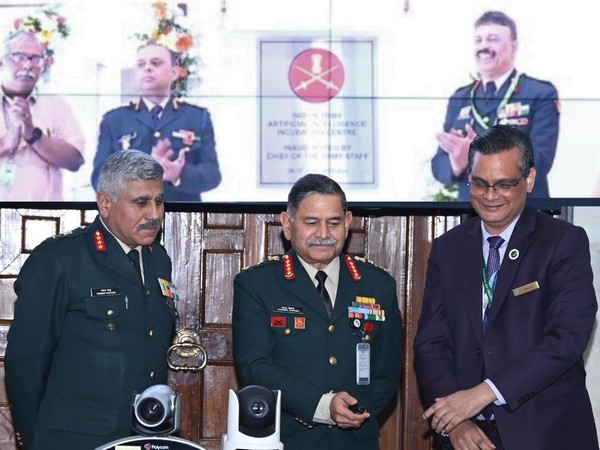In a significant development, plans were discussed to launch a jointly developed NASA-ISRO Synthetic Aperture Radar Earth Science (NISAR) satellite in 2025….reports Asian Lite News
Indian Ambassador to the US, Vinay Mohan Kwatra along with US Deputy Secretary Campbell and Principal Deputy National Security Advisor Jon Finer travelled to Houston to note the advancements in the India-US space cooperation in recent months and discussed steps to further advance the space partnership between the two countries.
In a press statement by the US Department of State, it was noted that the officials met with representatives from the National Aeronautics and Space Administration (NASA) and Indian Space Research Organisation (ISRO), including two ISRO astronauts who are training at NASA Johnson Space Centre in preparation to join a proposed mission the International Space Station in 2025.
In a significant development, plans were discussed to launch a jointly developed NASA-ISRO Synthetic Aperture Radar Earth Science (NISAR) satellite in 2025. The officials also met with representatives from the space industry private sector to explore innovative ways for strengthening the Indian and American commercial space sectors.
Taking it to X, Ambassador Kwatra said, “Wonderful to visit the Johnson Space Center of @NASA with @DeputySecState Kurt Campbell and Deputy National Security Advisor Jon Finer. Had the opportunity to discuss India and US space cooperation including in human space flight program and enhancing partnership between the two private sectors in the fields of innovation and technology. Was also glad to meet the Indian astronauts training at Houston.”
Following President Biden and Prime Minister Modi’s June 2023 commitment to work together to “reach new frontiers across all sectors of space cooperation” and India’s signing of the Artemis Accords, our two nations reached an inflection point on collaboration across civil, security, and commercial space sectors,” the White House noted in a press briefing.
During the meeting in Houston, Indian and American officials also reflected on the accomplishments of the past few months and charted the next steps to take our partnership to the next level. These include the selection of two ISRO astronauts to train at NASA’s Johnson Space Center for the first-ever joint effort between American and Indian astronauts at the International Space Station, the launch of the Axiom-4 mission and celebrating the completion of a Strategic Framework for Human Spaceflight Cooperation to deepen interoperability in space and working toward the conclusion of a new arrangement on advanced astronaut training, the White House noted.
Notably, discussions were also held to promote defence space cooperation through the US-India Advanced Domains Defence Dialogue, India’s participation in US Space Command’s annual Global Sentinel exercise, launching of a space situational awareness joint challenge under the India-US Defense Acceleration Ecosystem (INDUS-X) and advancing reviews of Missile Technology exports. (ANI)
ISRO starts assembling HLVM3 for Gaganyaan mission
Taking a major step towards the ambitious Gaganyaan human spaceflight programme, the Indian Space Research Organisation (ISRO) on Wednesday commenced the stacking of HLVM3, at the Satish Dhawan Space Centre (SDSC-SHAR) in Sriharikota.
The mission is slated for launch in 2025, and it will be the first uncrewed flight under the ambitious Gaganyaan human spaceflight programme. The data gained will be instrumental for the success of the manned missions.
The date coincides with the 10th anniversary of the LVM3-X/CARE mission, conducted on December 18, 2014.
“On the 10th anniversary of LVM3-X/CARE, ISRO begins assembly of HLVM3 for Gaganyaan’s first un-crewed flight! A major step toward India’s maiden human spaceflight and future space ambitions,” ISRO said.
“At 8.45 Hrs on December 18 at SDSC, the stacking of the nozzle end segment with full flex seal nozzle of the S200 motor took place, thus commencing the official launch campaign of the HLVM3-G1 / OM-1 mission,” it added.
During the 2014 mission, LVM3-X (which is now christened HLVM3) launched its maiden flight and “lifted a Crew Module of mass of 3,775 kg (LVM3-X/CARE mission) into a suborbital altitude of 126 km”.
Using thrusters it was oriented for a favourable re-entry, and later made a smooth splash down in the Bay of Bengal. It was retrieved by the Indian Coast Guard.
The Crew Module was developed as part of pre-project activities of the Human Spaceflight Project, well before the official Gaganyaan project was approved in 2019.
“It is a fitting coincidence that 10 years later, on the same day, ISRO is gearing up for the first un-crewed mission of Gaganyaan, by commencing the stacking of human-rated LVM3,” the ISRO said. Dr. S Somanath, Chairman of ISRO Mission was then the Director of the LVM3-X/CARE mission.
The new HLVM3, derived from LVM3, is designed with enhanced reliability to meet human safety considerations.
Importantly, to ensure crew safety it also features a Crew Escape System (CES), which is operational from the launch pad till its separation. The crew can safely eject from the Crew Module in case of an adverse situation.
“HLVM3 is a three-stage vehicle with a payload capacity of about 10 tonnes to LEO. The vehicle is 53 metres tall and weighs 640 tonnes. The vehicle is getting ready for launch with the Crew Module and associated systems undergoing final checks at ISRO centres,” ISRO said.
The LVM3-X/CARE mission’s success helped ISRO to shape the human spaceflight programme.
The space agency noted that the foundational data provided by the CARE mission was useful in developing the “iterations in the Crew Module design of the Ganganyaan mission, along with subsequent pad abort tests, air-drop tests, and test vehicle flights”.
The new Crew Module, designed with enhanced safety margins and multiple redundancies, will fly aboard the Human-rated LVM3, ensuring the safety of the Gaganyatris, ISRO said.
Further, the Gaganyaan programme will also play a vital role in the construction and operationalisation of the Bharatiya Antariksh Station (BAS).
ALSO READ: Trump threatens reciprocal tax on India













